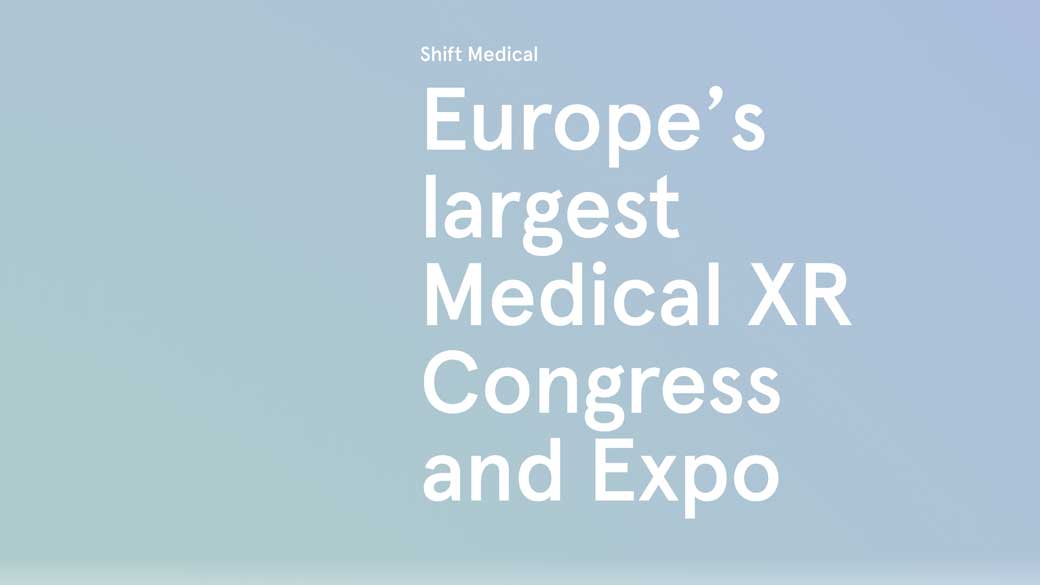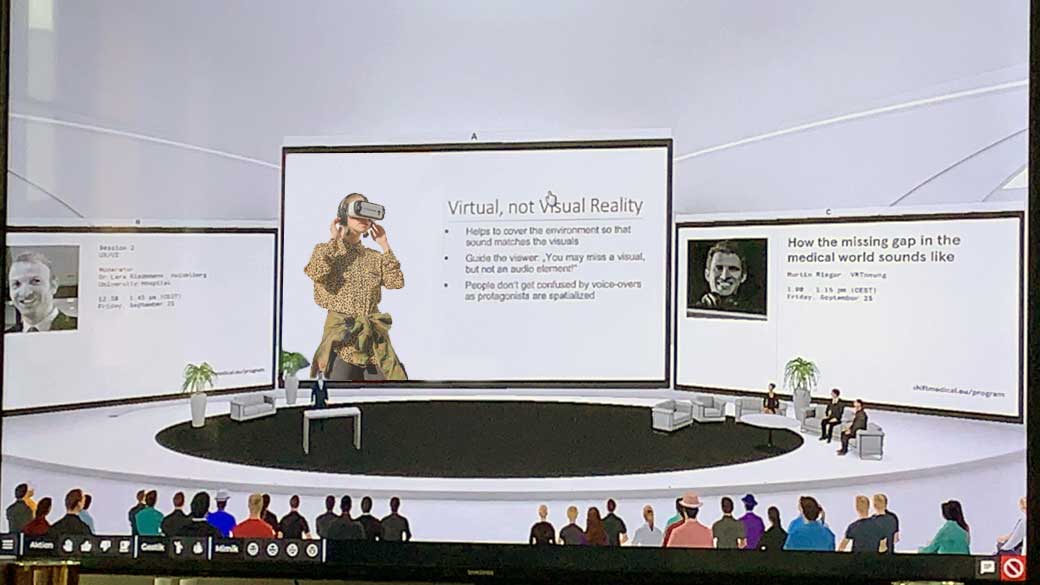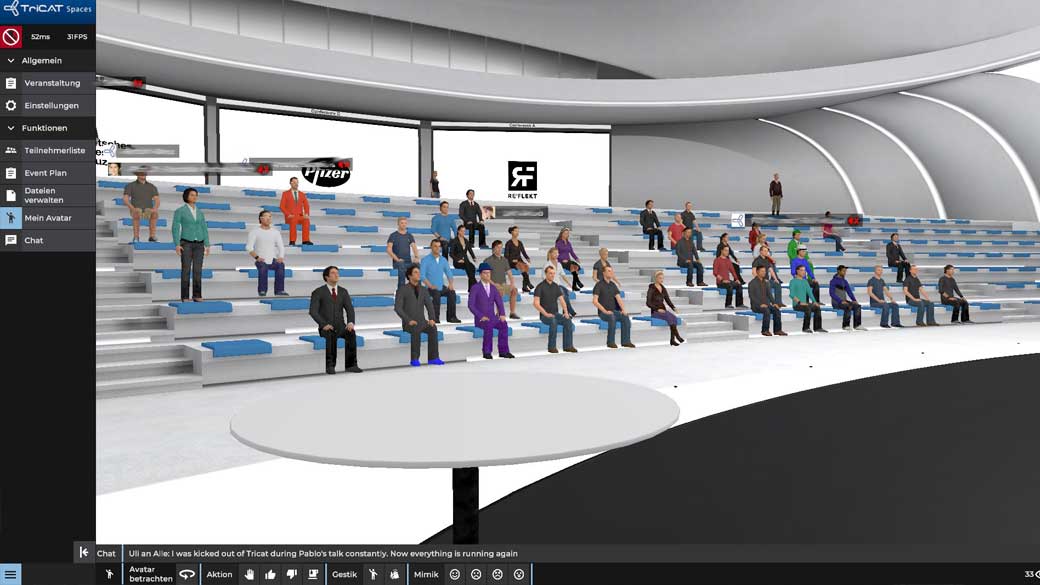
Metaverse Event: Shift Medical – Virtual XR Health Congress and Expo
The Metaverse is a shared, immersive, and interactive virtual reality space that is set to revolutionize the way we interact with digital environments. It promises to be more engaging and interactive than anything we’ve seen before.
Key elements necessary for creating immersive experiences in the Metaverse include audio and spatial audio, which are crucial for enhancing user engagement and interaction. These elements contribute significantly to the overall immersive quality and realism of metaverse environments.
What is the Metaverse?
Definition and Concept of the Metaverse
The Metaverse is a shared, immersive, and interactive virtual reality where users can create their own avatars and environments, engaging with others in real time. Imagine a virtual world where you can socialize, learn, work, and even shop, all from the comfort of your home.
This concept, which has been around for decades, is now becoming a tangible reality thanks to advancements in technology. Companies, startups, and academic institutions are all contributing to the development of this next-generation internet, which promises to be more engaging and interactive than anything we’ve seen before.
The Metaverse is poised to revolutionize industries like entertainment, education, healthcare, and commerce by offering fully realized, immersive environments.
How the Metaverse is Changing the Way We Experience Events
The Metaverse is transforming the way we experience events by allowing us to attend them remotely, eliminating the need for physical presence. This is a game-changer for those who can’t attend events due to location or mobility issues.
Imagine attending a virtual concert where you can interact with other attendees and the performers in real time, or a virtual conference where you can learn about new products and network with professionals from around the world.
The Metaverse also makes events more accessible, especially for people with disabilities, by removing physical barriers. Additionally, virtual events can attract a global audience without the logistical challenges and costs associated with travel, making them more inclusive and far-reaching.
Benefits of Metaverse Events
Metaverse events offer a plethora of benefits that traditional events simply can’t match. First and foremost, they provide a global reach, allowing participants from all corners of the world to join without the need for travel. This not only reduces travel expenses but also makes the event more accessible to a diverse audience.
The immersive nature of the Metaverse enhances engagement, making it easier for attendees to focus and interact. Networking opportunities are also amplified, as virtual avatars can easily mingle and connect in ways that are often more convenient than in physical settings.
Moreover, the cost savings are significant—not just in terms of travel, but also in venue rentals and other logistical expenses. Overall, Metaverse events offer a unique blend of accessibility, engagement, and cost-effectiveness, making them an increasingly popular choice for industry professionals and organizations looking to host impactful events.
Shift Medical 2021
Once again this year I get to be a part of THE event on Medical XR. This year there will not only be a talk, but I will also hold a workshop. A workshop about sound in VR. The whole thing in VR. So it will be exciting – and acoustically challenging.
The concept of the audio metaverse will also be explored, highlighting how it bridges physical and virtual environments through unique audio experiences.
So it’s best to secure a ticket right away. There is already a very top-class line-up of speakers: https://shiftmedical.eu/
Follow-up 2021
This year I gave a workshop with my own screen and bleachers in the separate networking area. People could easily join and ask questions as well as share lively topics. Topics like:
-
what is important about sound
-
how do we perceive it
-
Why is sound relevant for VR and 3D?
-
why is sound so important in the medical field
were especially interesting for the visitors this year.
Above all, it was about the medical devices which make far too much noise and often totally annoying beeping. Here it was suggested that some things could be done better to keep the noise level more pleasant or lower.
To the event itself, it ran over the platform tricat. The program supports the sound and you could hear some of the spatial audio, the people could locate themselves, but it is far from how it could actually sound.
The concept of virtual space enhances user engagement and interaction through spatial audio, making the experience more realistic and immersive. Unfortunately, you can still tell that everything is too compressed, so you can’t get the feeling that you are in the room, but rather an abstract sound source in the room.
Mono could be played but no stereo, so unfortunately I could not show 3D examples and how nice it could sound. Also could be shown on the page only a few videos and audio examples with good listening quality. Conclusion: There is still a lot of potential here.
Shift Medical 2020
Shift Medical 2020 is a virtual congress and expo on XR in the medical field. It is the largest medical XR congress and expo in Europe, enabling international exchange in the medical and health field.
The event utilizes a cutting-edge virtual event platform that integrates artificial intelligence and machine learning to create immersive experiences, significantly enhancing user engagement and simulating the experience of live events in a digital environment.
Program of the virtual event
Over the three days of the event there will be exciting presentations from many speakers. Topics such as XR in therapy and XR in training will be highlighted. But it will also be about – as in my talk – how to make the best use of the possibilities of XR for the medical field.
The event will also explore how to host metaverse events, utilizing the immersive and dynamic nature of the metaverse to create engaging and interactive experiences.
In addition to the presentations, there will also be networking breaks and the opportunity to ask questions.
The program in detail can be found on the Shift Medical website.
VRTonung will be there
On Friday, I’ll be giving a talk on “How the missing gap in the medical world sounds like” at 1pm. I’m talking about the “missing gap” because sound is rarely talked about in the medical world. Yet there are important applications in music therapy, for example.
But it has rarely been considered beyond how immersive audio can add value. Especially in training, acoustic feedback is important to convey information about hearing, sonification is the keyword here.
ECG sound can be used to sonify the heartbeat, for example, but sonification can go far beyond a simple beep. Information and emotions can be directly influenced by sound with binaural beats, immersive audio and music.
But what sound has its proper place where, and where there are still gaps in the XR medical world that need to be filled, is what this Talk shows. Traditional virtual events do not offer the same level of immersion and interactivity as metaverse events, which create a more dynamic and engaging experience for participants.
Review
I’d call myself a VR native. But what was offered here was really one of the most innovative events I have ever been to. Because of Corona, the whole event was held in VR – unlike originally planned. But you were not forced to use VR glasses. Via the TriCAT Spaces platform, you could also simply participate via a Windows computer. That’s how I gave my presentation. It looked like this:

If you want to know what the view on the stage was like, below is the picture. By now you know virtual events, mostly via Zoom or similar. There you are appointed as a speaker or host and can then give your presentation.
Here, of course, it was a bit different. Because every participant was present as an avatar, one had to walk onto the stage in the virtual event location. The virtual space created an immersive environment that enhanced the experience, making it feel more realistic and engaging. A bit like a video game

Fun Fact
Here’s how it went for me. I sat very inconspicuously in the audience and dutifully waited my turn. When my name was called, I pressed the forward arrow key and my avatar rose from its seat. I casually walked up to the stage while listening to my introduction. But suddenly a hole appeared in front of my avatar and I fell in.
Well, and then I only saw how the stage in front of me suddenly flew upwards away from me. And my avatar fell further and further into the groundless floor. I couldn’t do anything against it – except to write quickly to the organizer:
Martin: “Help, I fell into a white hole!?” Organizer: “OK”
And poof I was teleported back by mouse click. That means, one moment I was mentally falling through space and time. And in the next moment I was already standing on the stage. Wow, that’s a lot for the brain to process. But off I went, and fortunately I can talk about sound in VR and Medical XR in my sleep.
Here is what you missed from the presentation:
Presentation Summary: VR for Medical Applications in the Metaverse
Introduction: VR in the Medical Sector
The presentation primarily focused on the role of virtual reality (VR) and the metaverse in transforming the medical sector. It explored how these immersive technologies are being applied to improve medical training, therapy, and patient care.
The discussion highlighted how metaverse events can be tailored for medical professionals, offering a unique opportunity to connect, learn, and collaborate within virtual spaces.
Virtual Worlds and Virtual Environments for Medical Use
The concept of virtual worlds and virtual environments was discussed in detail, especially in the context of medical applications. In these virtual spaces, healthcare professionals can simulate medical procedures, conduct surgeries, and interact with others in ways that are impossible in traditional settings.
These virtual environments are more than just a space for interaction—they provide an immersive platform for virtual medical conferences and hands-on training that enhances learning and engagement.
Immersive Technologies: Augmented Reality and VR in Medicine
A significant portion of the presentation focused on immersive technologies like augmented reality (AR) and virtual reality in the medical field. These technologies enable doctors and trainees to explore medical scenarios in a safe and controlled environment.
VR provides the sense of immersion that traditional learning methods cannot offer, making it a valuable tool for education and practice in the medical world.
Audio in Virtual Medical Environments
The use of spatial audio in the metaverse was also emphasized, as it is essential for creating realistic and engaging experiences. In a medical VR environment, audio plays a critical role in enhancing the feeling of presence and interaction.
It helps simulate realistic conditions for medical training, making the virtual experience more lifelike and beneficial. This aspect of audio in the metaverse is especially important for those learning complex medical tasks and procedures in VR, as it adds an extra layer of realism and immersion.
Corporate Adoption and the Future of VR in Healthcare
Looking ahead, the presentation discussed the increasing corporate adoption of VR and metaverse events in the healthcare industry. As more medical professionals and institutions explore virtual platforms, the potential for virtual conferences and virtual training sessions grows.
The ability to host immersive events for medical professionals in the metaverse provides new opportunities for learning, networking, and collaboration, without the need for physical presence, thus reducing travel expenses and allowing access to global audiences.
Conclusion: The Future of Medical Training and VR
The presentation concluded with a focus on the future of VR and immersive content in the medical field. By incorporating 3D audio and spatial audio into virtual medical environments, the metaverse offers the opportunity to enhance medical training, improve patient care, and create more engaging virtual experiences for healthcare professionals.
As immersive technologies continue to evolve, their application in the medical sector will become even more integral, revolutionizing how professionals learn and collaborate.
back to events